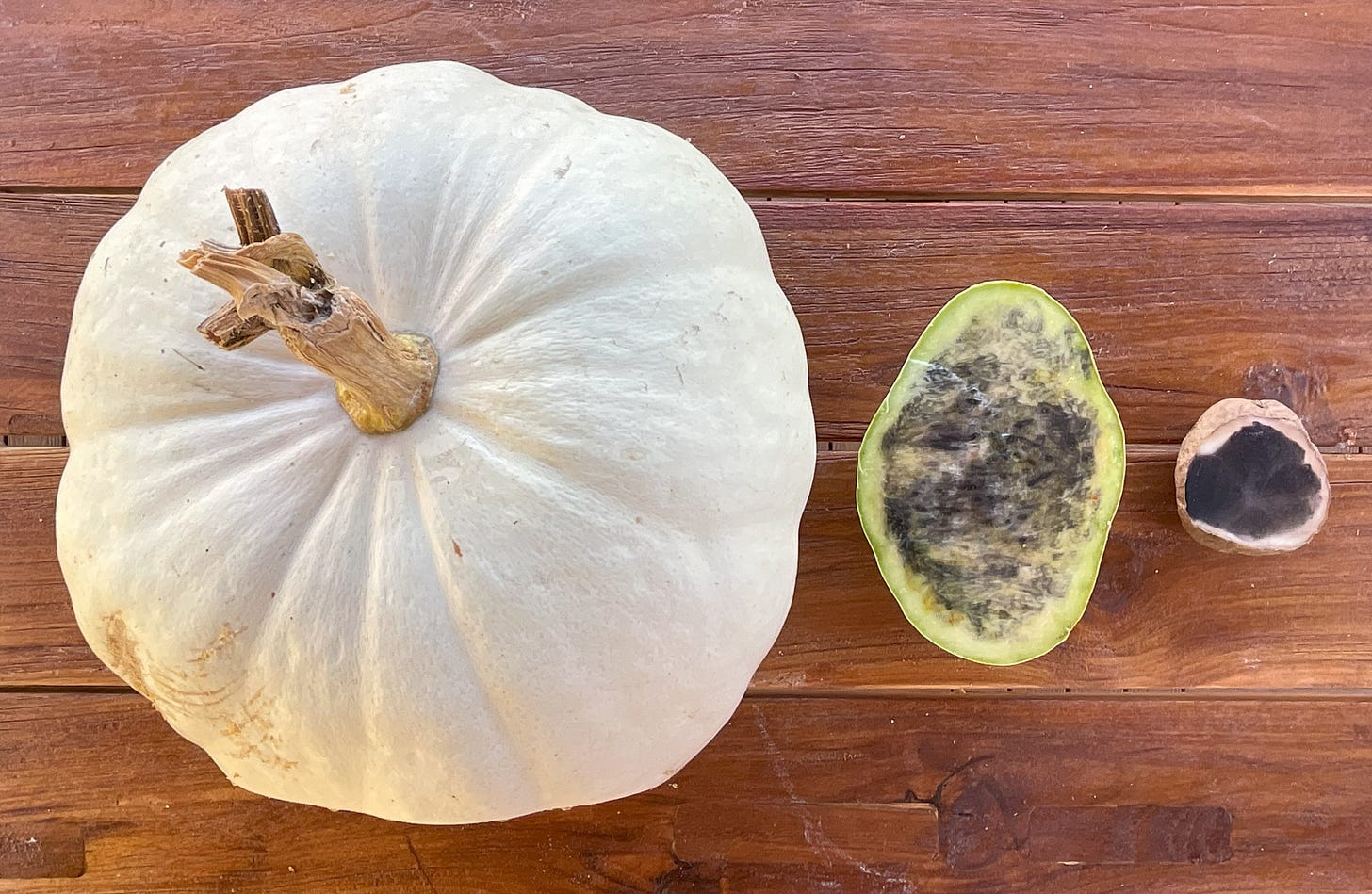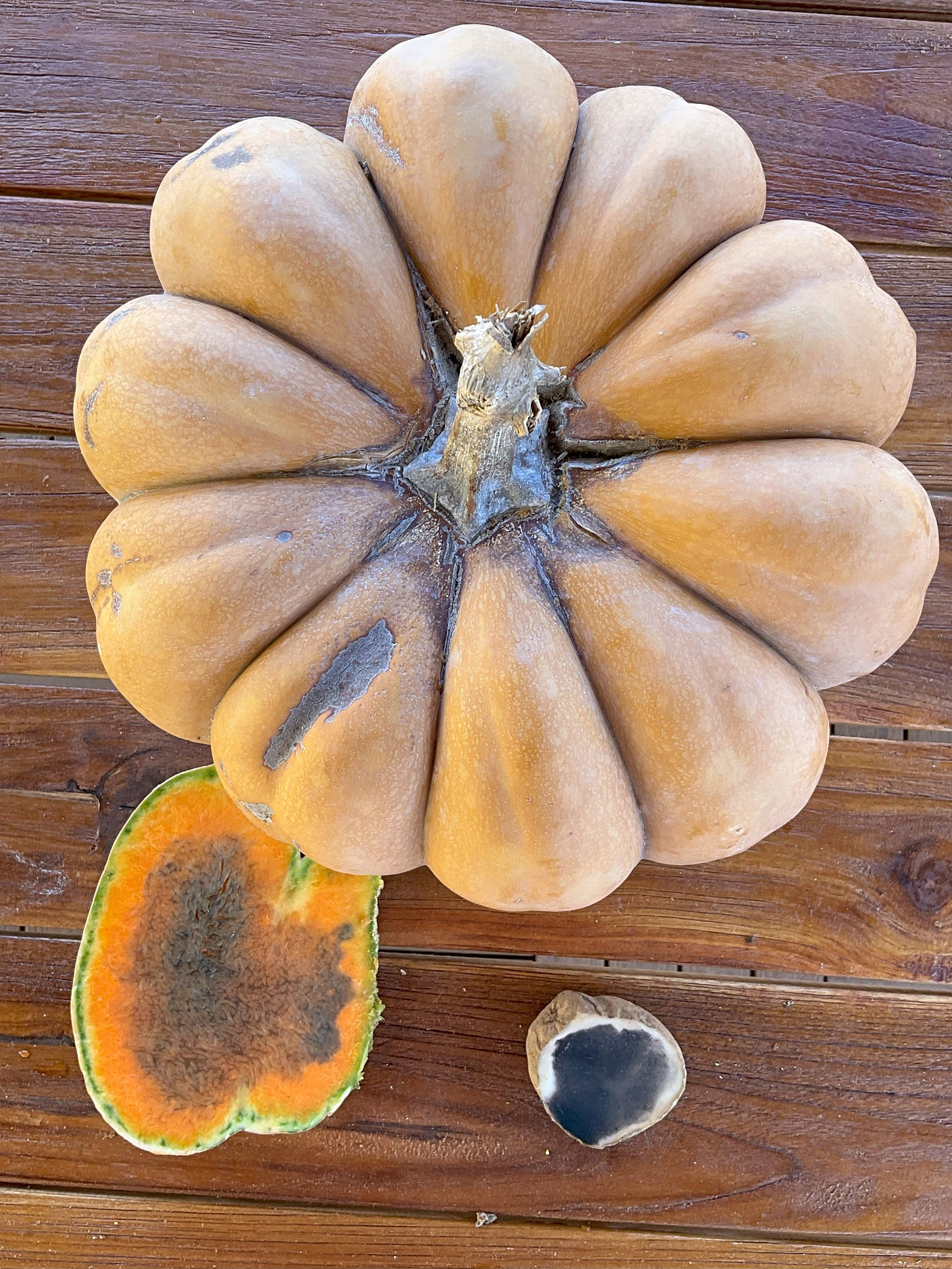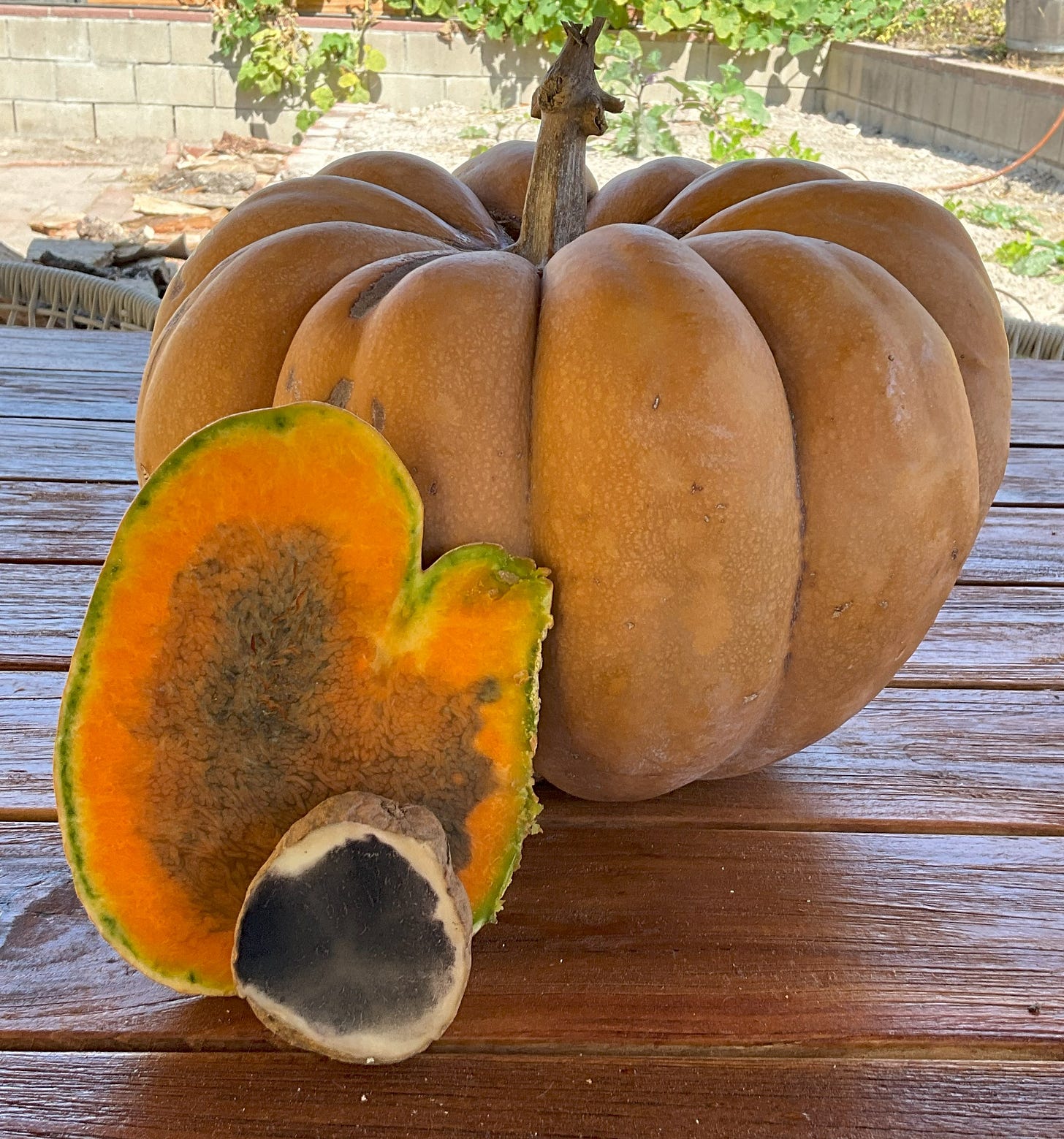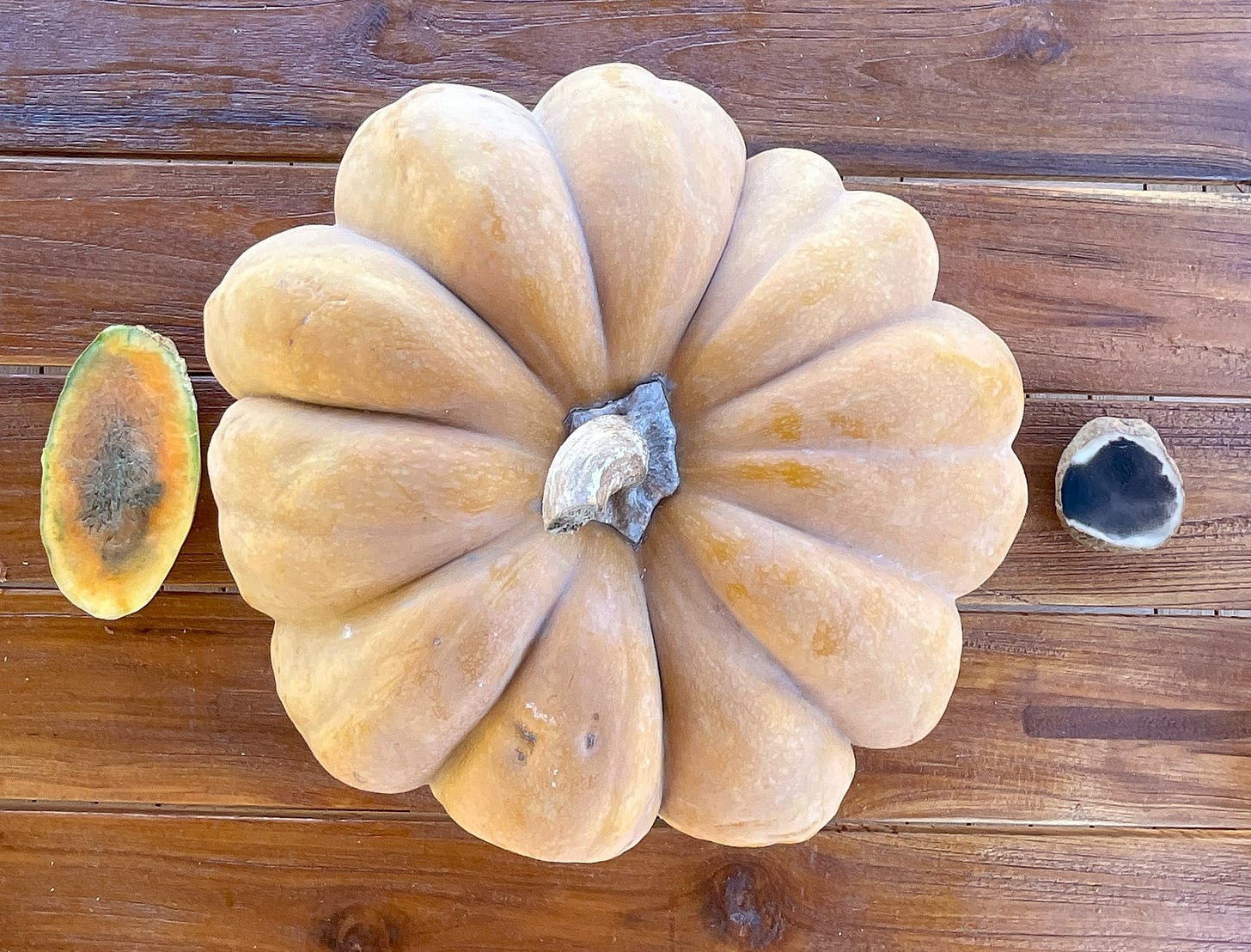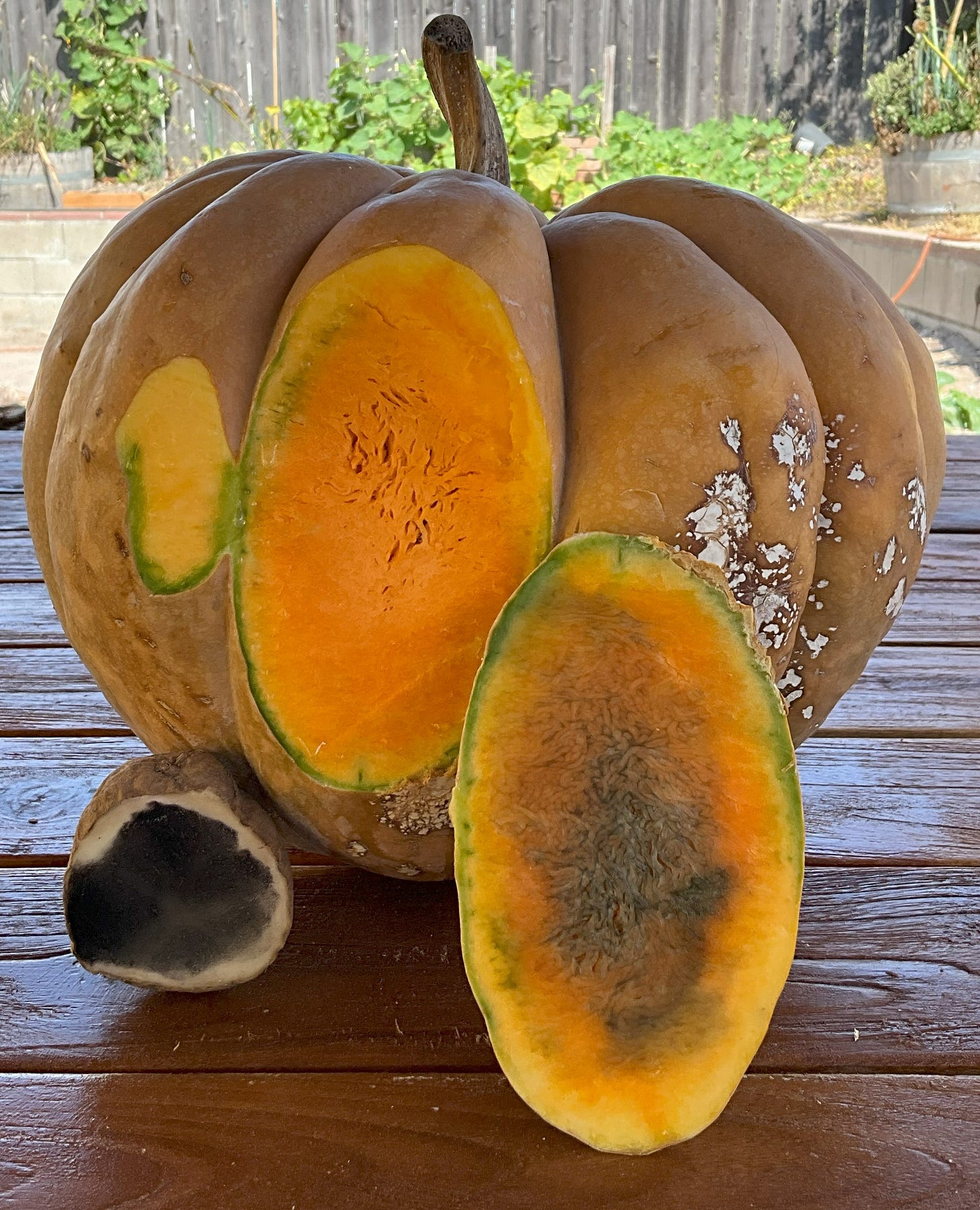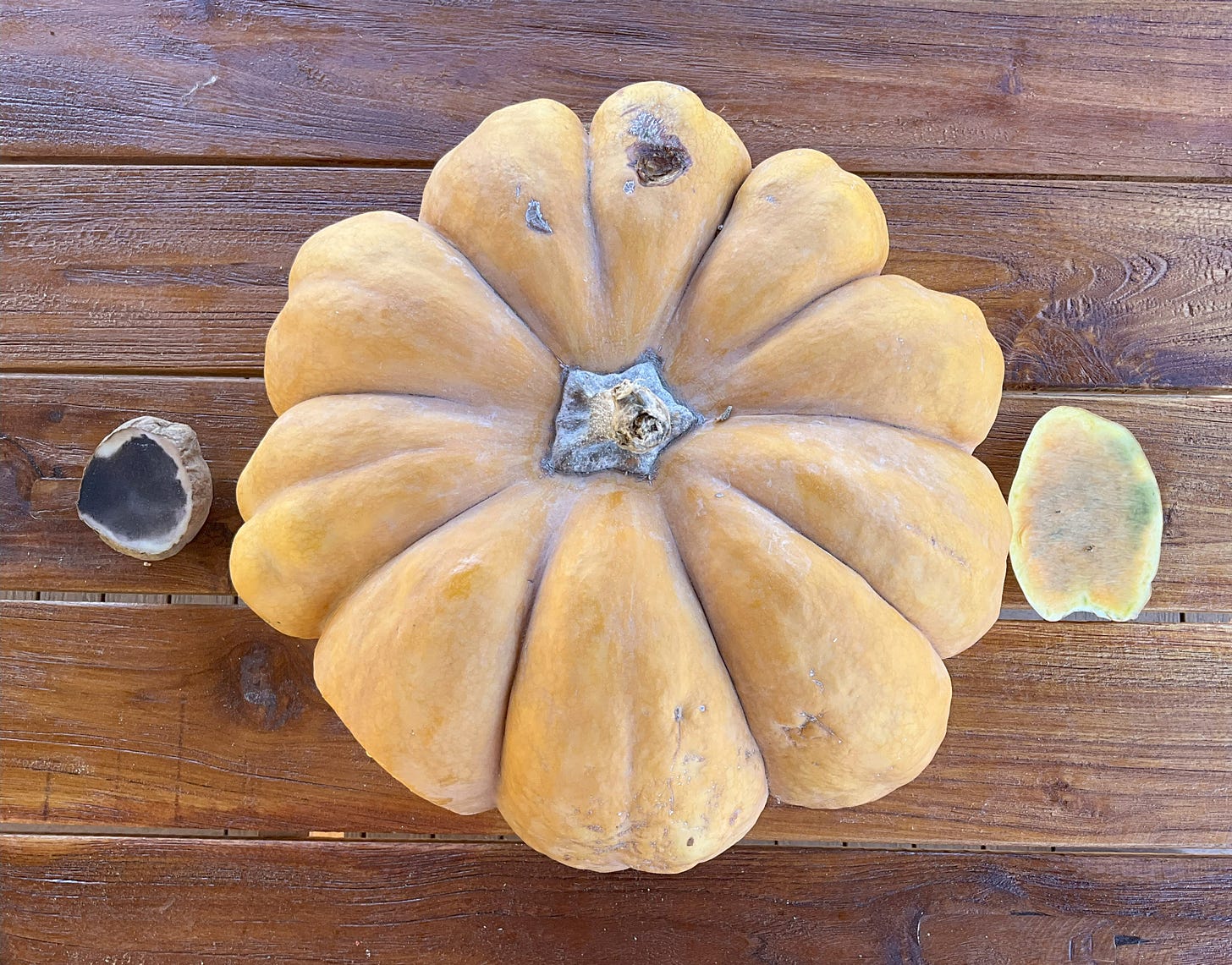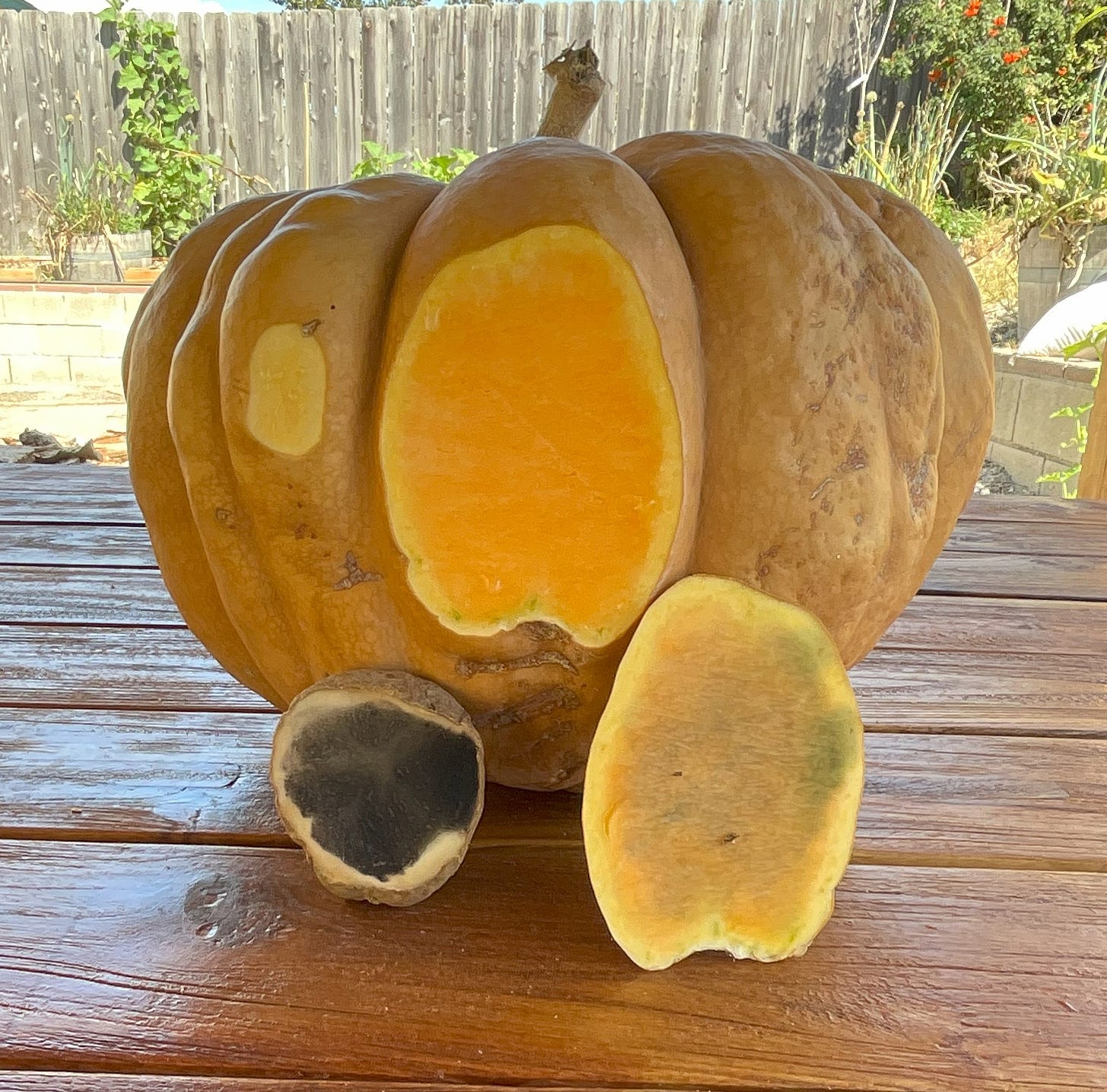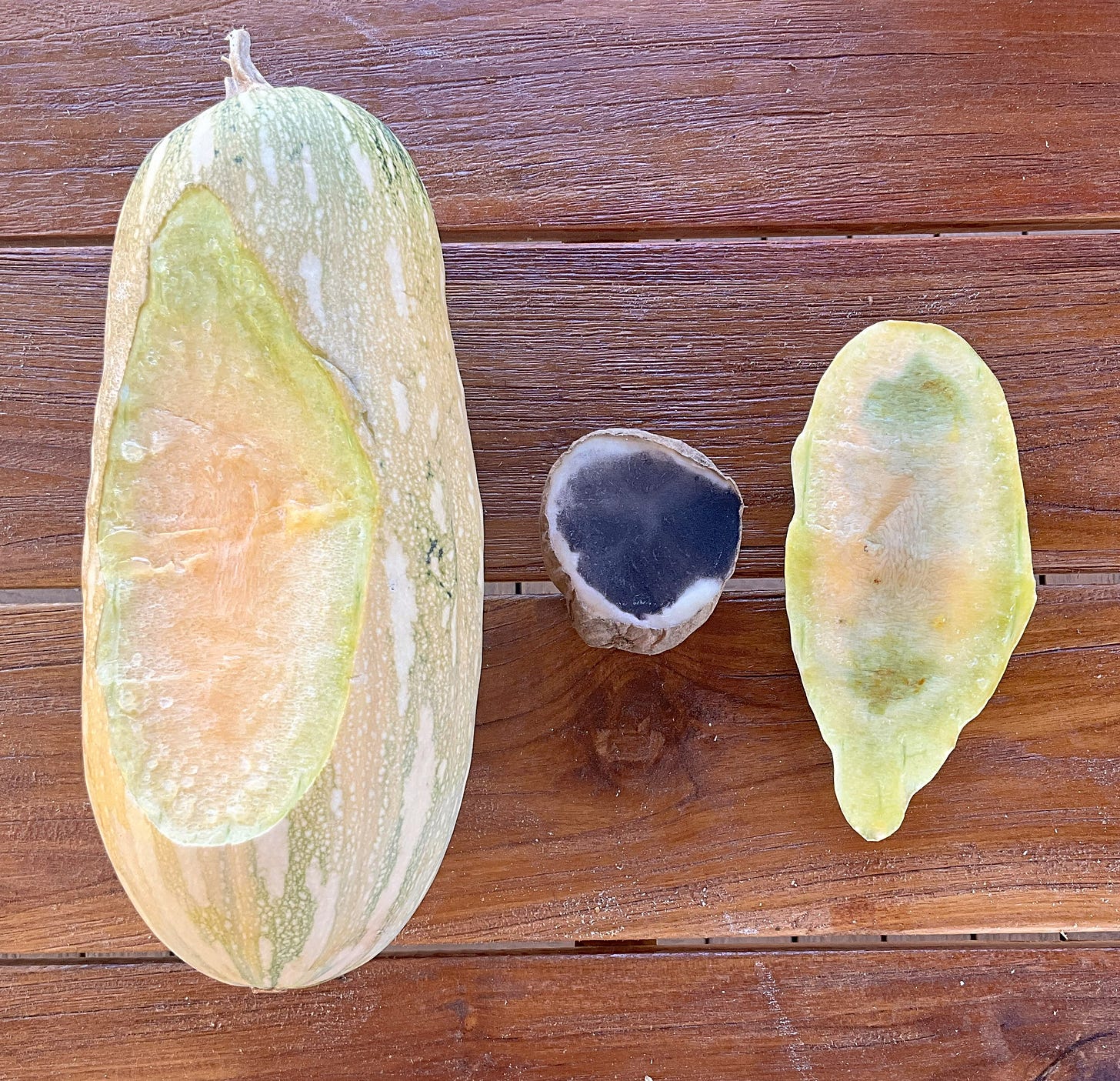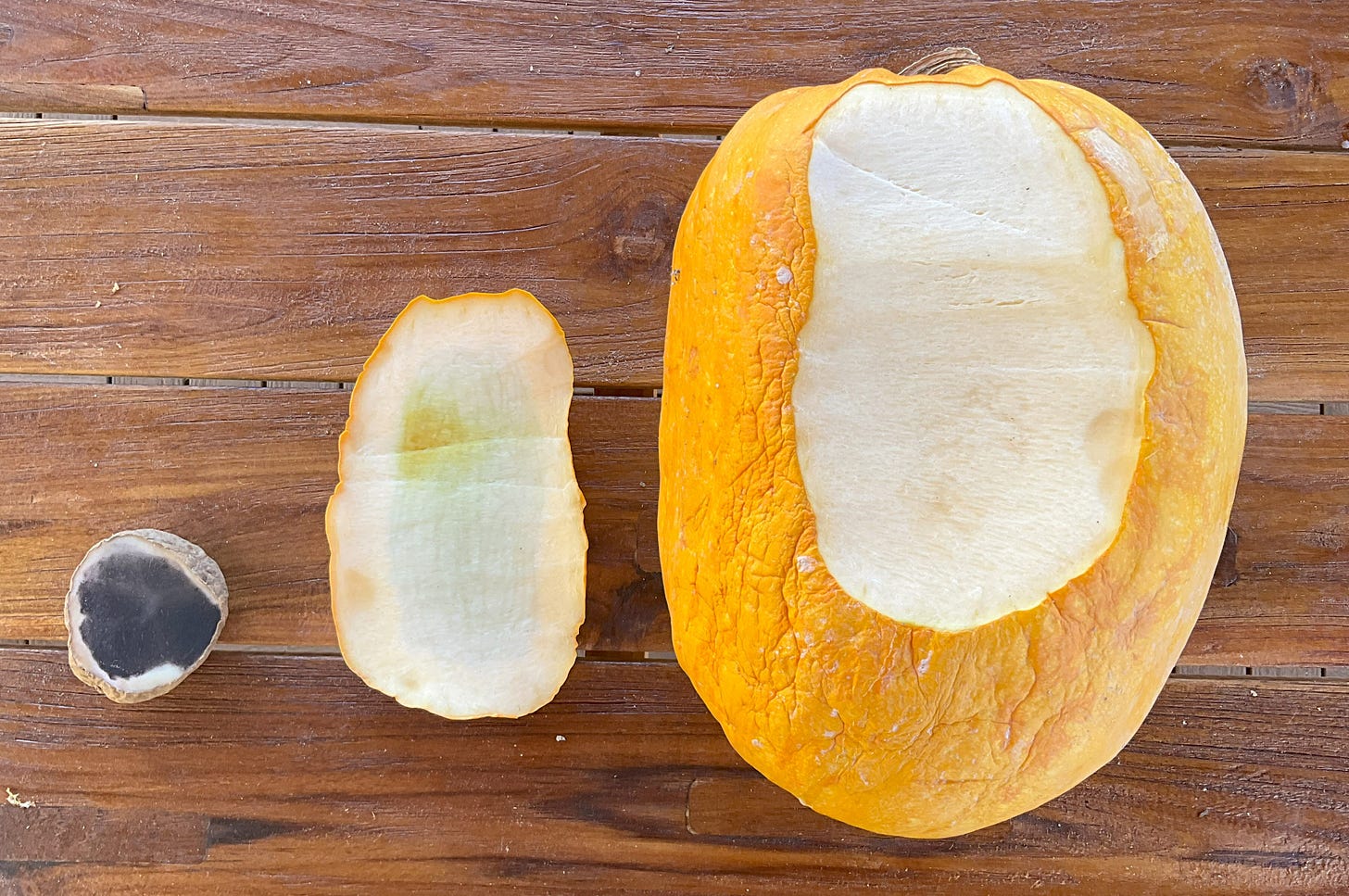This post serves as an update and a bit of a data dump for anyone interested in this project. Yesterday I finally decided to cut open the rest of the squash I had lying around that had not been tested for starch yet. Three of the C. moschata squash had been stored outside for more than 12 months with no protection whatsoever from the rain in winter or the beating desert sun in summer, yet were still somewhat starchy and delicious. One hybrid C. moschata which was a cross between my starchy landrace and the summer squash zucchino rampicante, was mildly starchy even though several fruits from the same vine were very dense with starch earlier this spring. One, C. maxima squash that survived my winter germination trial (more on that later), turned out to be the starchiest squash in this experiment, though the starch was not evenly distributed within the flesh. One C. pepo squash which also survived my winter germination trial, was barely starchy at all but you can at least see a trace in the flesh.
The winter germination trial that I conducted is a very simply designed mass selection event that I carried out directly following the first winter rain in my Mediterranean climate (winter cold/wet, summer hot/dry), by spreading a few thousand seeds from last years crosses around my neighborhood in neglected patches of ground next to parking lots, paths or medians. This allowed me to select for a very small number of plants that were willing to germinate in the cold wet climate rather than the hot/humid climate these plants are currently adapted to. I waited one month after the last rain of the season to rescue seedlings from those neglected patches of dirt (so that I did not lose them to landscapers or pocket gophers). I manage to rescue two C. moschata vines, one C. pepo vine and one C. maxima vine. I planted them in my garden where they do not receive any assistance save for irrigation. So far the C. maxima and C. pepo both produced exactly one large fruit each then died, while the C. moschata vines are both alive and are busy maturing one fruit each.
The next part of this post is going to be a series of images with figure captions below them. All images were taken at the same time, using the same starch identification technique (iodine applied to starch turns shades of blue or purple until it appears black at saturation). Each image includes a sliced potato that has been treated with iodine as a positive control and an example of starch saturation.
Figure 1. Starchiest squash
C. maxima squash from a landrace project I started three years ago, that survived the winter selection trial. This squash was not stored for any significant period of time, it was cut directly from the dead plant and treated with iodine. The sliced potato in the bottom right of the image is a reference for starch saturation which is the goal of this project.
Figure 2. A close second
This is one of the C. moschata squash that was stored outside completely exposed to the east San Diego winter and summer for more than 12 months. It was still rather starchy and was also delicious.
Figure 3. Not too bad for third place
This is one of the C. moschata squash that was stored outside completely exposed to the east San Diego winter and summer for more than 12 months. It was still starchy and was also delicious.
Figure 4. Distant fourth place
This is one of the C. moschata squash that was stored outside completely exposed to the east San Diego winter and summer for more than 12 months. It had almost no starch but it still tastes great as far as that goes.
Figure 5. Almost no starch in fifth place
This is the hybrid cross between the parent of the three prior C. moschatas with the summer squash Zucchino Rampicante. Two of the fruit from the same vine were very densely saturated with starch and two had almost no starch at all. So it seems that starch production trait is likely having some issues getting consistently expressed.
Figure 6. Dead last
Above is the fruit of the lone C. pepo vine that survived the winter selection event. This was the only fruit produced by a short vine that grew rapidly and died before the fruit was even completely mature. Barely any starch was in the flesh at all.
That is the update to the starchy squash project as of 25AUG25. In case you are interested in seeds, please reach out to Bactelium’s business email office@bactelium.com. We will be able to make arrangements for seeds as a gift for donations or direct sales. Please keep in mind Bactelium’s main mission is molecular biology so it may take time to arrange for sale and shipment of seeds. All proceeds will go to supporting Bactelium’s mission of precision fermentation for food security.


